Indian Route: An Ode To The Sari
5 yards of elegance and femininity ~ a sari is a beautiful example of ethnic exquisiteness and is my first choice when I want to put my best foot forward.
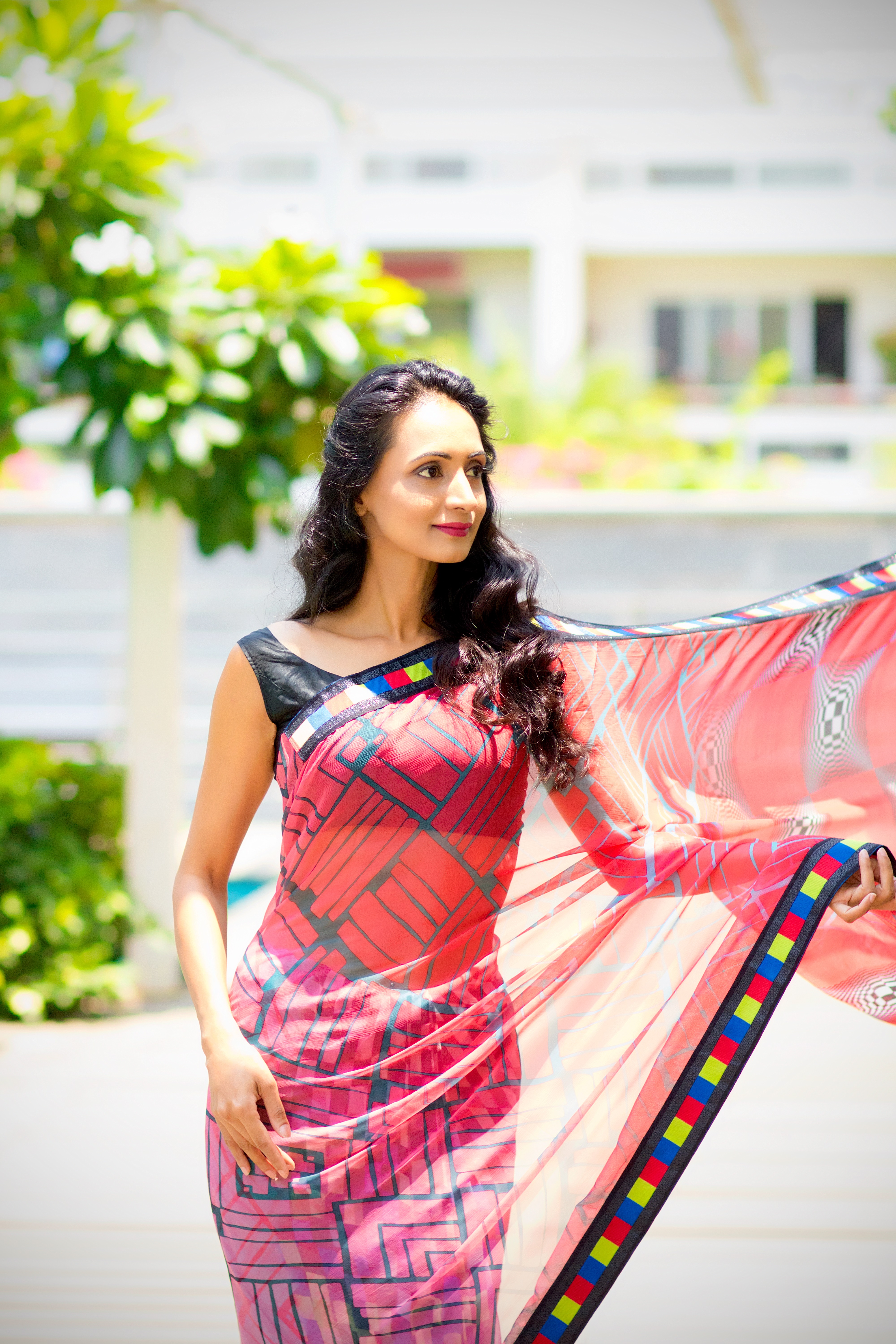
In the journey of life, I have discovered that every action, including the ones we overlook because of their simplicity, is firmly rooted in our mental and emotional state of being. This is probably why our lifestyle continues to evolve as we embrace new viewpoints and experience a thought transformation. I’ve seen my own personality metamorphose over the years, and my sense of fashion move to a zone of personal style. Today, my choice of colours, prints, and designs are a semblance of my current ideologies, my confidence, and self-expression.
After all, style {or fashion} is a form of self-expression. A significant transformation in my evolving personal style has been the frequent inclusion of saris. I have been buying saris right from the time I started earning. I make it a point of buying a sari every time I visit a different state in India, specifically handloom saris or ones that are a speciality of that state or region. I am also a proud owner of a Dhakai Jamdani sari that a dear friend brought for me from Bangladesh.
People often ask, “How did you learn to drape a Sari?” My mother has been my inspiration and source of knowledge when it comes to draping the sari. Her love for saris and my joy in watching her effortlessly drape it to perfection, fuelled my love for this graceful piece of clothing. The art of draping a sari combined with the eloquence and femininity with which you wear it lends exquisiteness to the attire. As for the posture needed for a sari, you either have it or you don’t. Sadly, this cannot be taught.
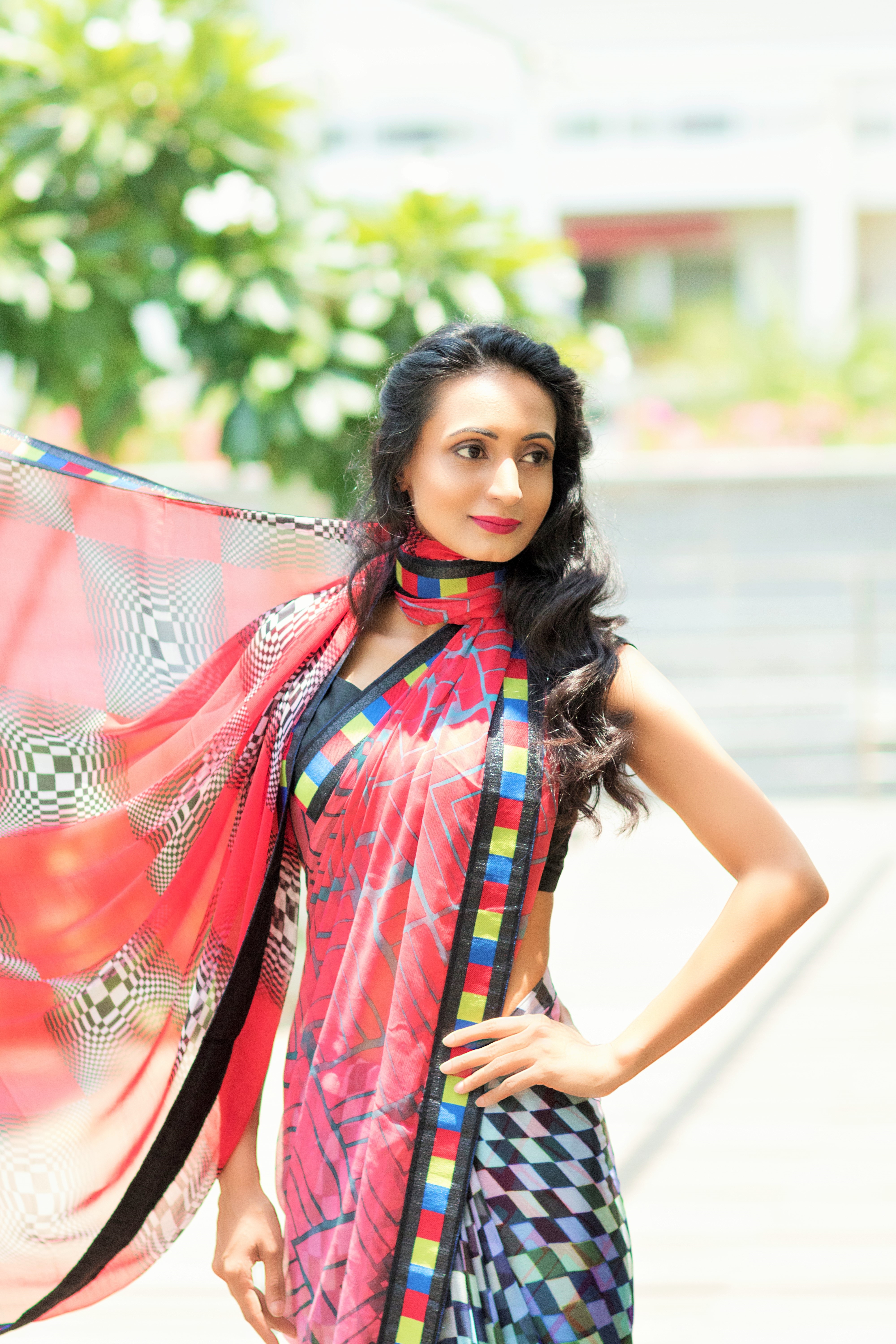
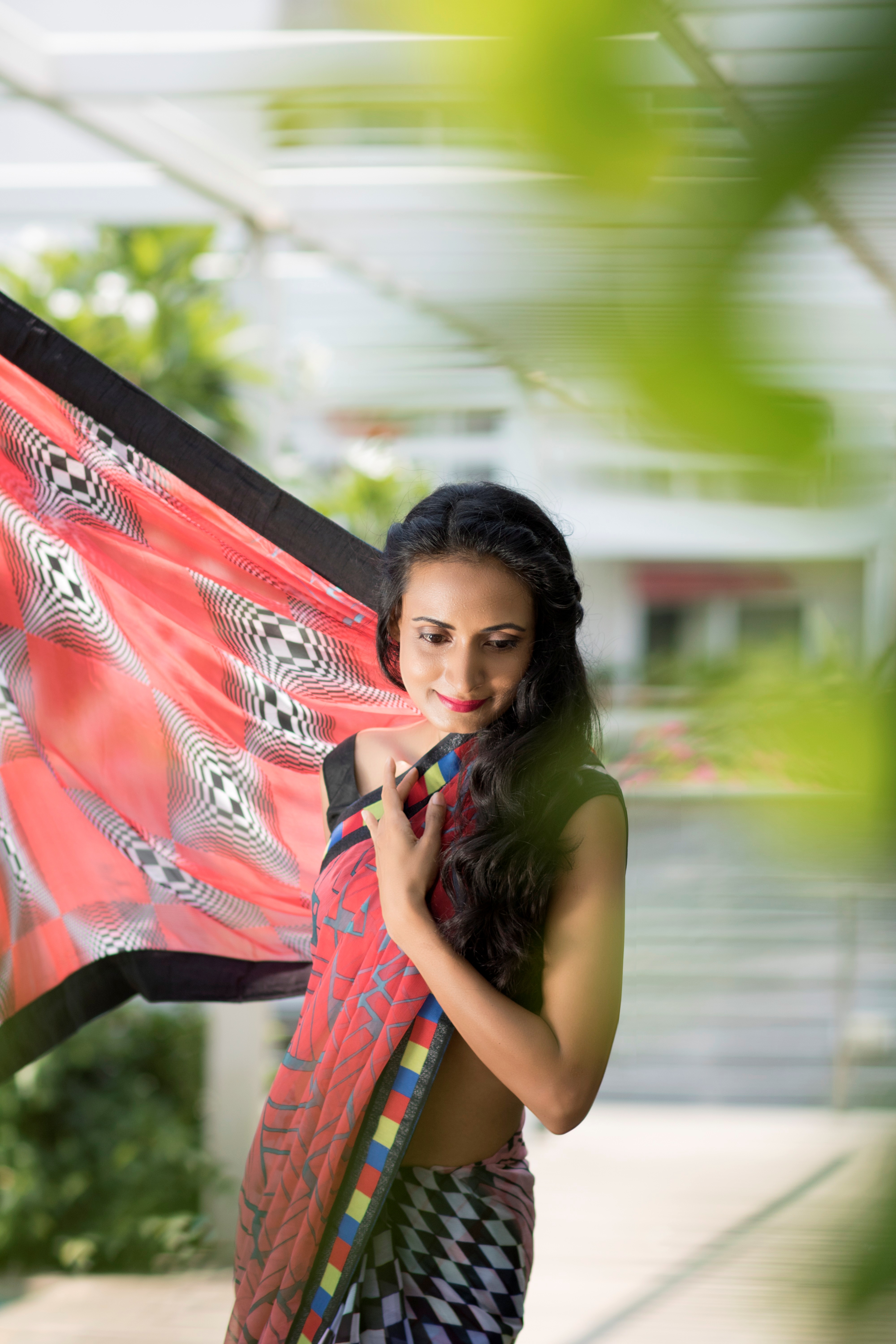
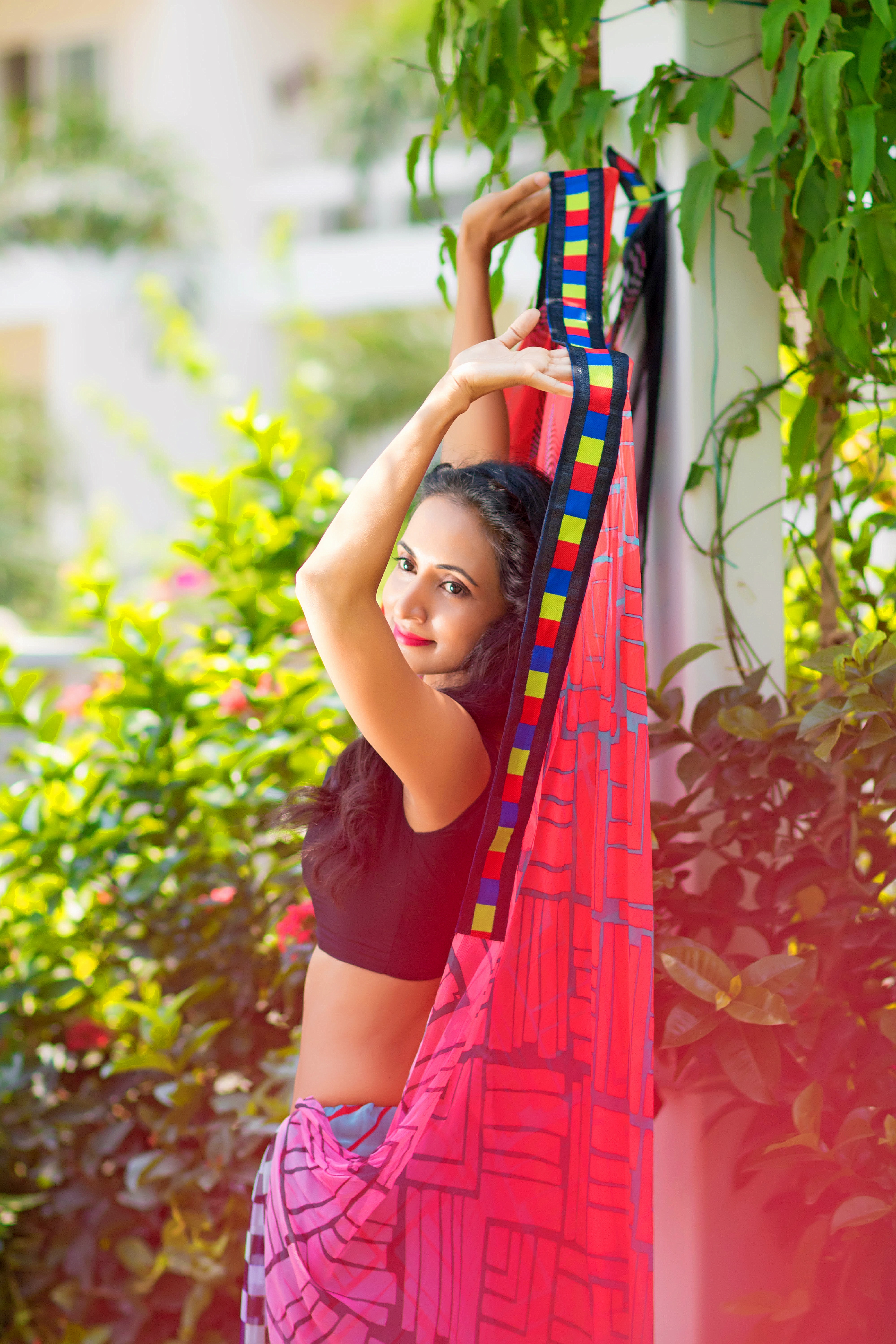
The sari is an embodiment of beauty and versatility. Dating back to the Indus Valley Civilisation which flourished between 2800 BC and 1800 BC, the sari carries a rich heritage of culture and traditions tied in its stunning prints, patterns, and embroideries.
The Prarit word ‘Sattika’ is mentioned in early Buddhist literature and is known to be the descendant of the word ‘Sari’. Sattika was shortened into Sati over generations and it gradually evolved into ‘Sari’ as we know it today.
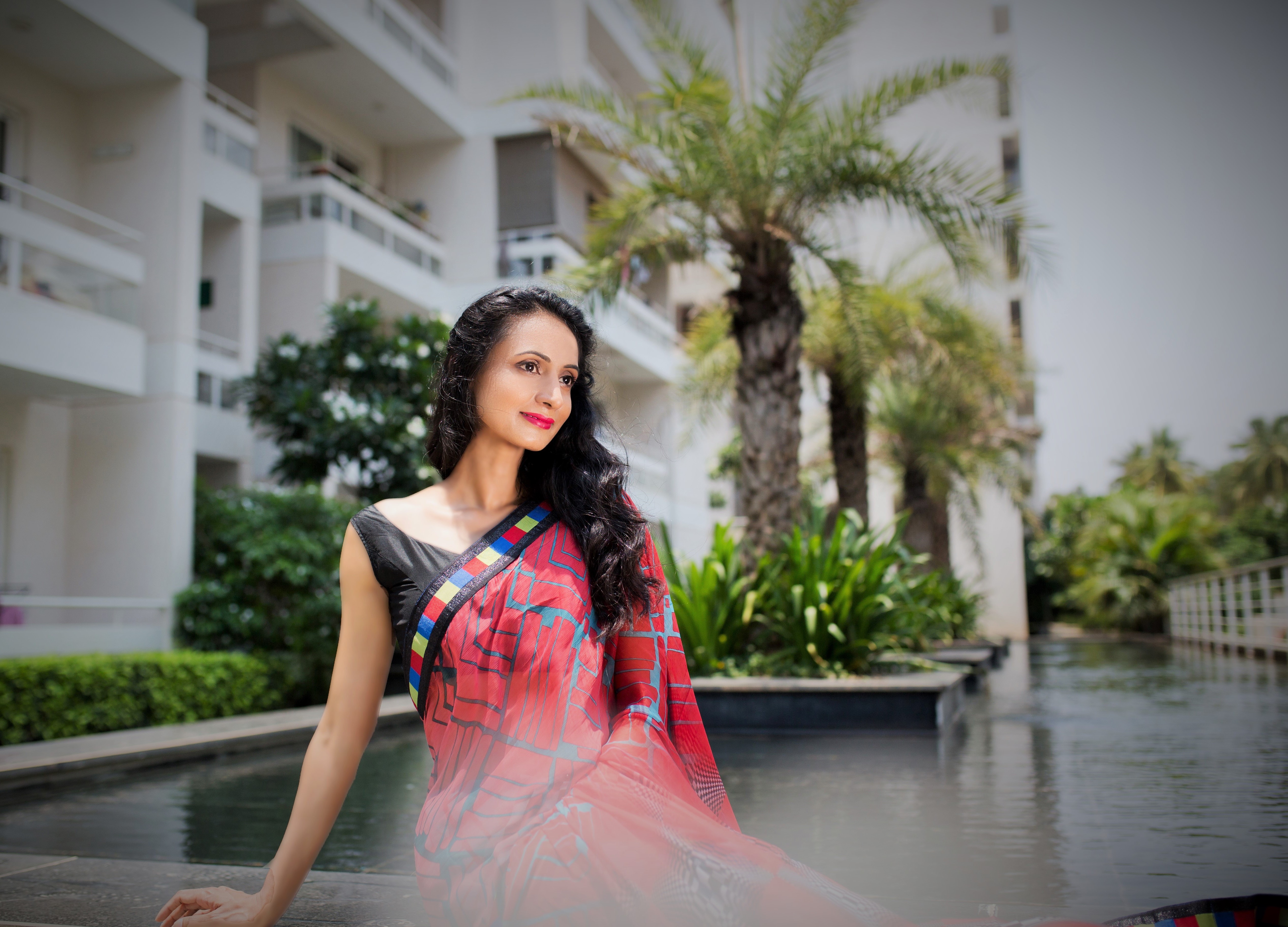
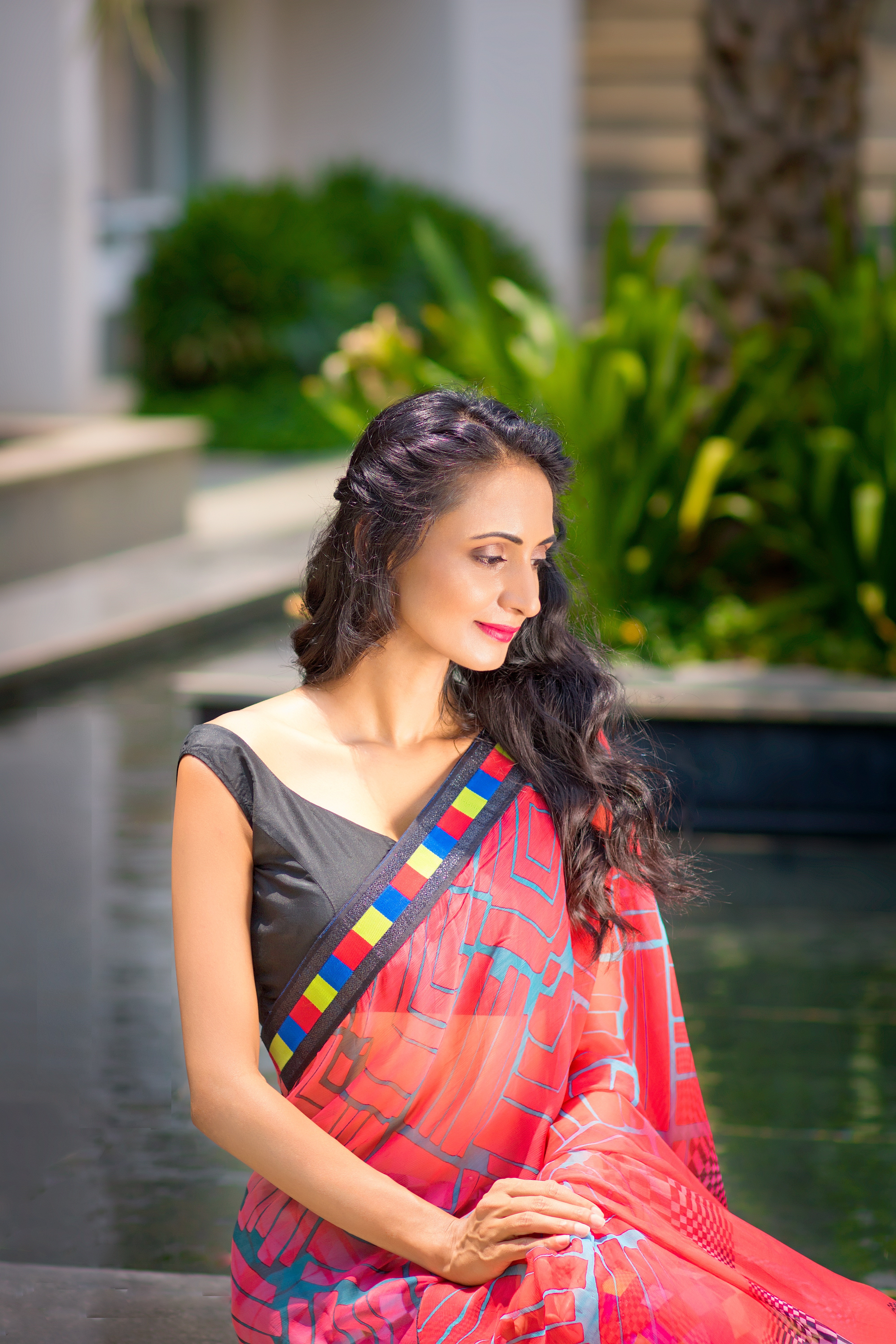
In the beautiful folds and creases of a well-draped sari hides the rich history behind this raiment. It was once symbolic of the region and the beliefs of the wearer. The colours used in the sari were not just abstract, arbitrary symbols; they represented something much more meaningful. Red was related to courage while, white was worn by priests and their followers as a sign of purity. The designs and patterns of a sari were usually unique to a specific group of people or a region. There was a differentiation of caste, culture, and beliefs simply by the saris worn by women.
Darwin’s theory applies to the beautiful sari too. In its quest for survival, the sari has confronted modifications, invasions, migration, and even globalisation to create a niche for itself as a sophisticated and glamorous garment that gracefully enhances the beauty of any woman who wears it.
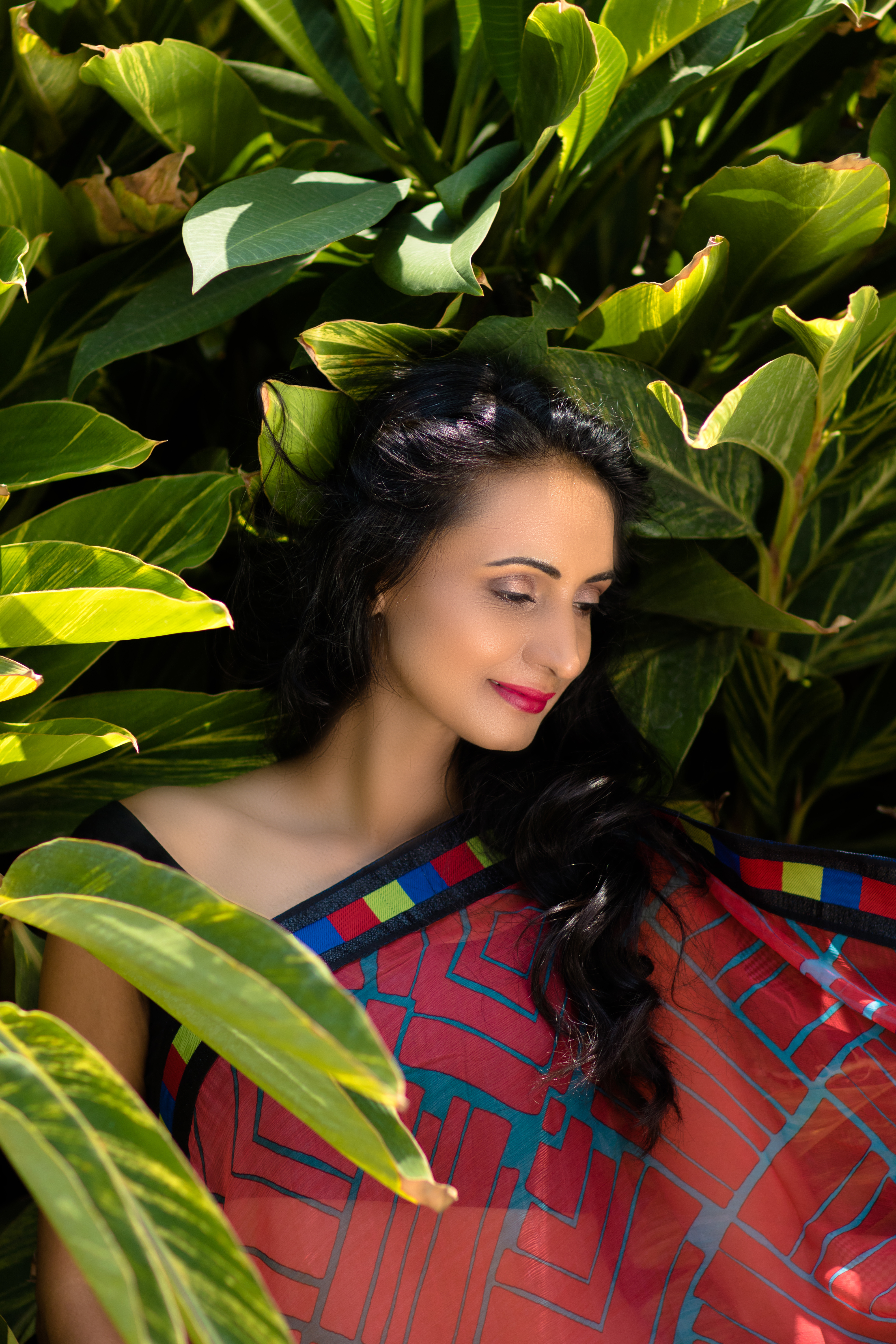
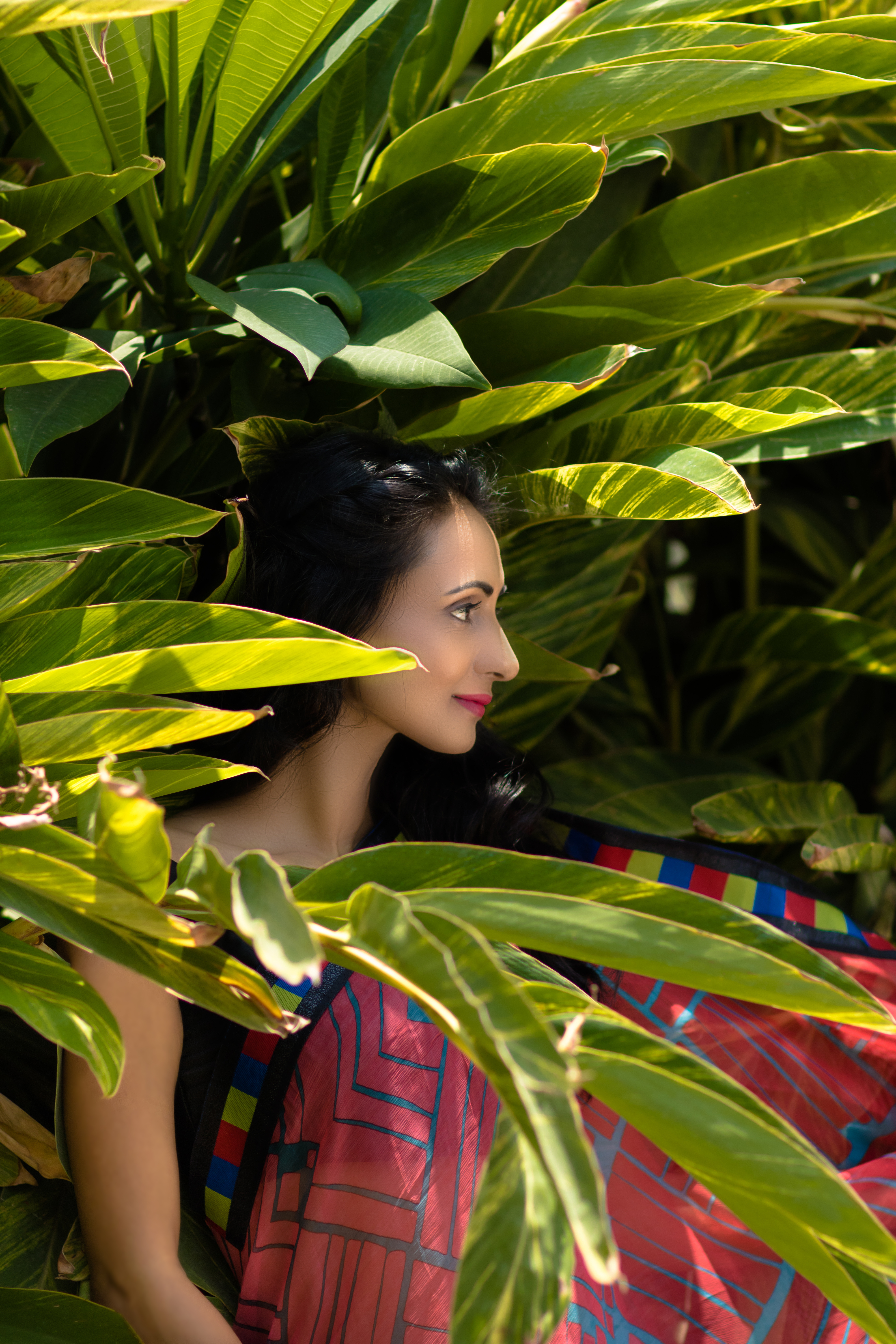
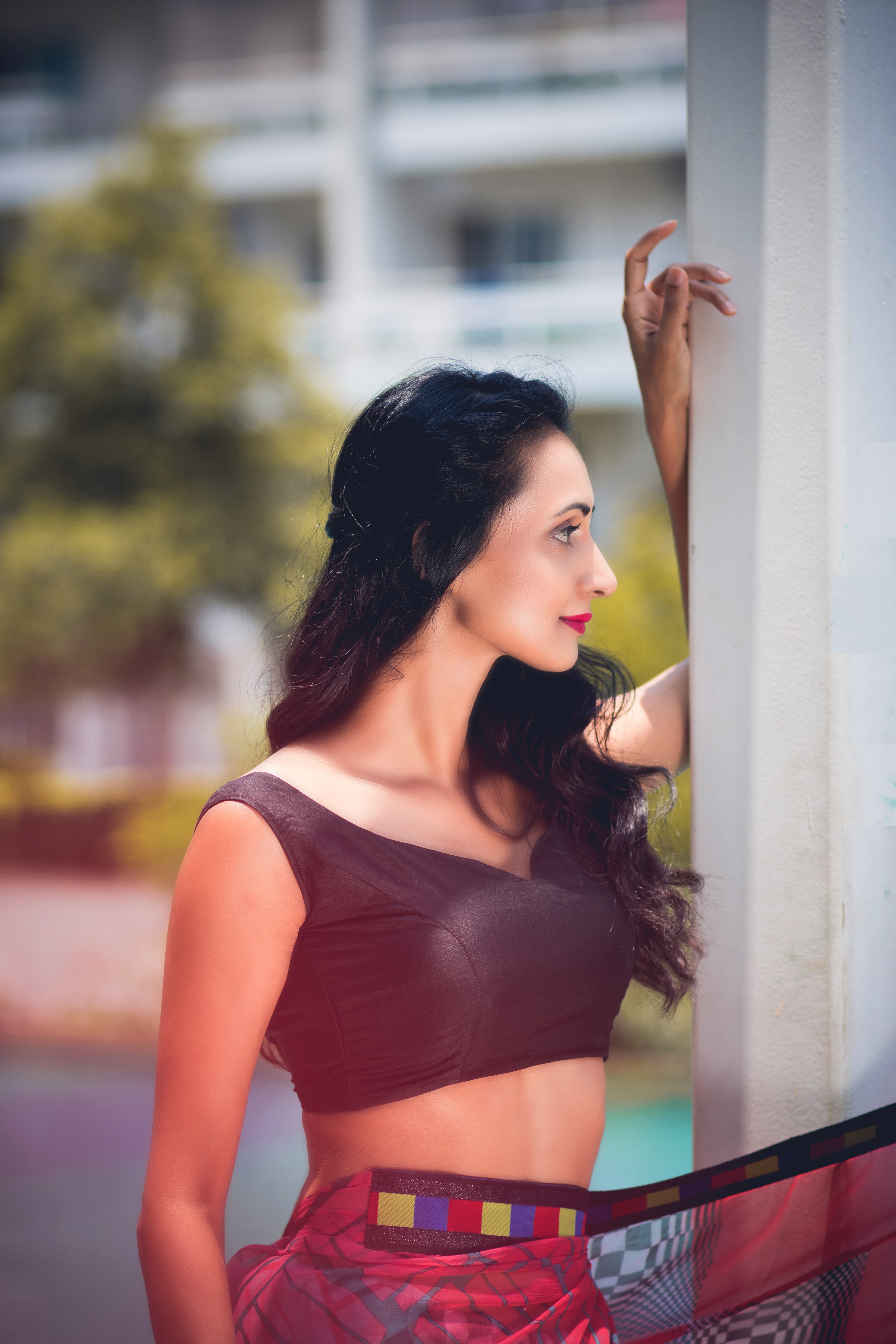
The Sari has always earned a special space in my closet, and I can safely say the same for many women all over the globe. Here are a few reasons why one of the world’s oldest and perhaps the only surviving unstitched garment from ancient history continues to hold a sacred space in our lives:
1. Versatile ~ India’s versatility reflects in the draping styles of its most popular piece of clothing ~ the sari. Every state has its own specific style of wearing this graceful garment. Some of the most popular ones are the Gujarati draping style, the Rajasthani way, the Bengali style, and the Maharashtrian way of draping the sari. Then there some very unique styles down South, too. While traditional styles remain close to our hearts, women are also beginning to experiment with contemporary draping styles that add a new twist to this ethnic garment.
2. Sensuous ~ A sari beautifully flatters the silhouettes in its fluid drapes, offering a very feminine and sensuous appeal to the wearer.
3. Suitable to every occasion ~ The sari is perfect for almost any occasion; whether you are heading to an office party or a romantic date, a wedding, or a get-together with friends. Furthermore, the choice of material and accessories you pick for the sari can give you either a casual or a festive look.
4. Glamorous ~ The luxurious sari is a favourite with most Indian designers, as it gives them the ability to choose from a range of materials, colours, and patterns. This is probably why it is constantly re-worked and re-invented by designers, making it more contemporary while keeping its essential elegance and exquisiteness intact.
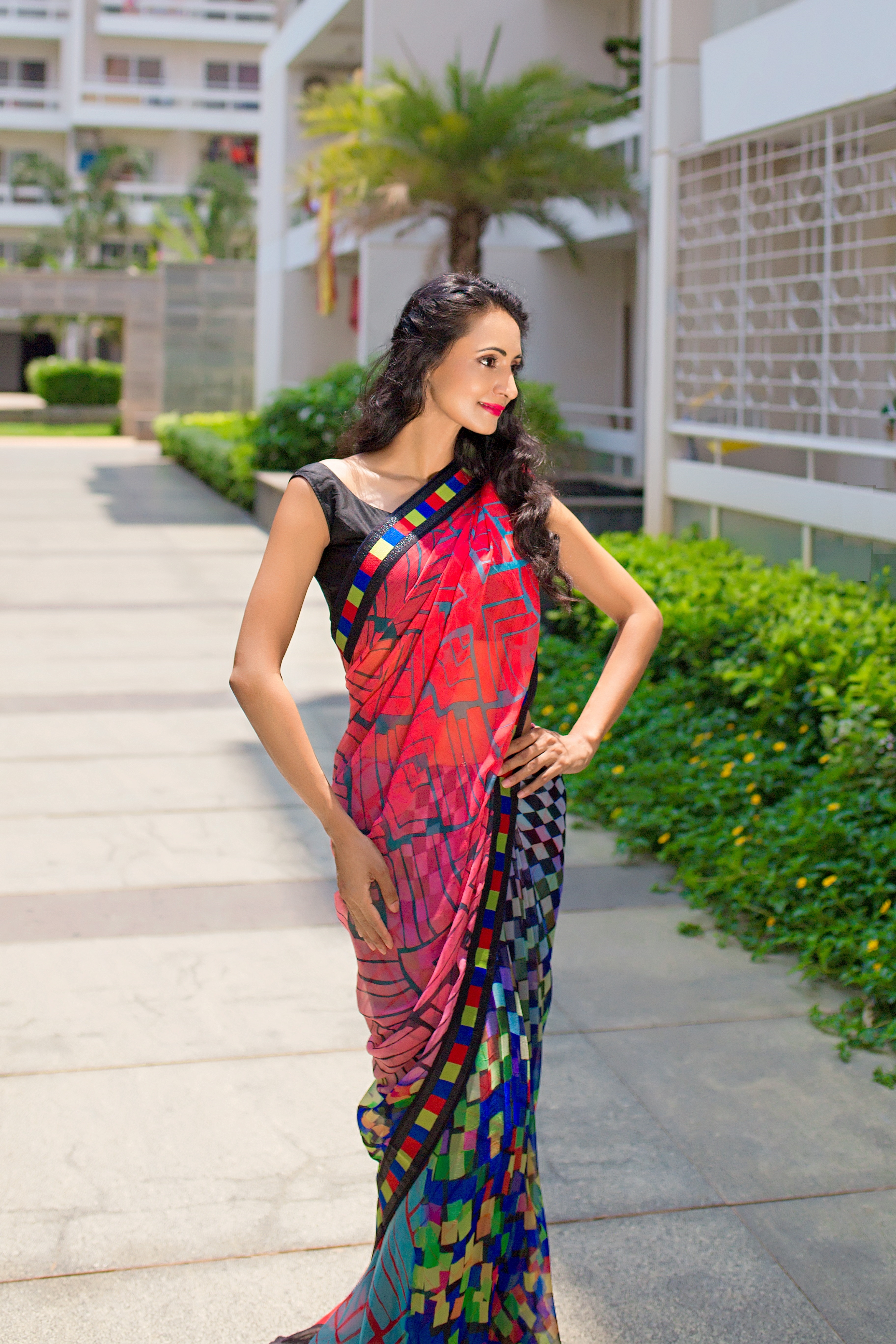
On a side note, Bollywood and Yash Raj have inconspicuously directed my imaginations of chiffon saris to Switzerland, snow, and dance! The fact that they drape so well and can be dressed up or down just makes chiffon saris a must-have in my wardrobe. The pure chiffon Archana Kochhar digital-print sari I am wearing in this post was purchased several years ago, and it continues to be a favourite!
To conclude: Touted to be one of the most beautiful garments in the world ~ an artistic canvas of the weaver and the printer ~ the Sari is the epitome of beauty and grace. Its beauty lies in the integration of colours, patterns, and prints which are enchantingly interwoven to create the most sensuous and glamorous attire!
The Sari has been a garment of beauty for centuries, and by the looks of it, these 5 yards of material wrapped in India’s cultures and traditions, will last for an eternity!
Behind The Scenes 🙂
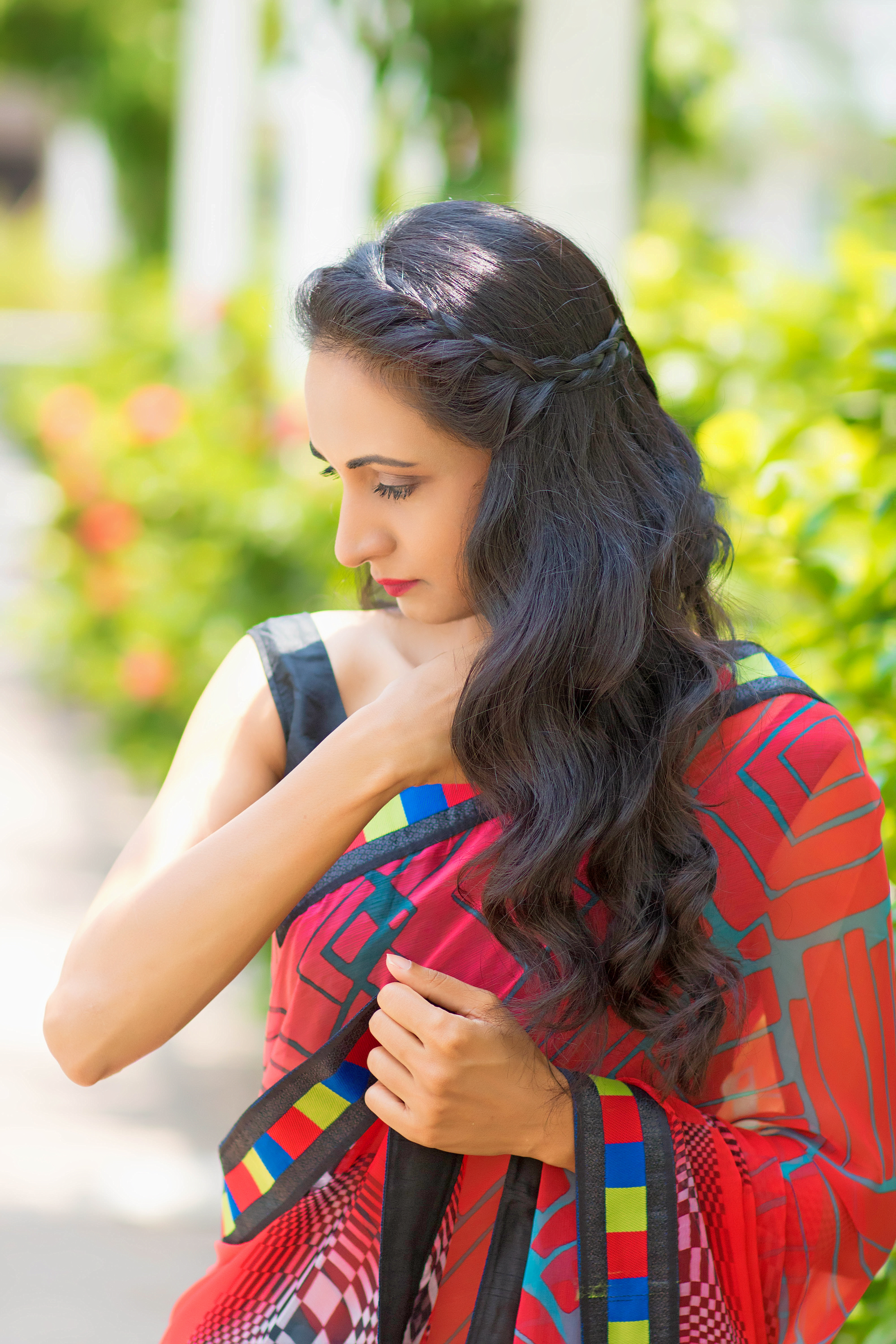
Do you also share the same emotions for the sari like I do? Do you experiment with your sari styles? Post your pictures and tag me on Instagram and show me your potential!



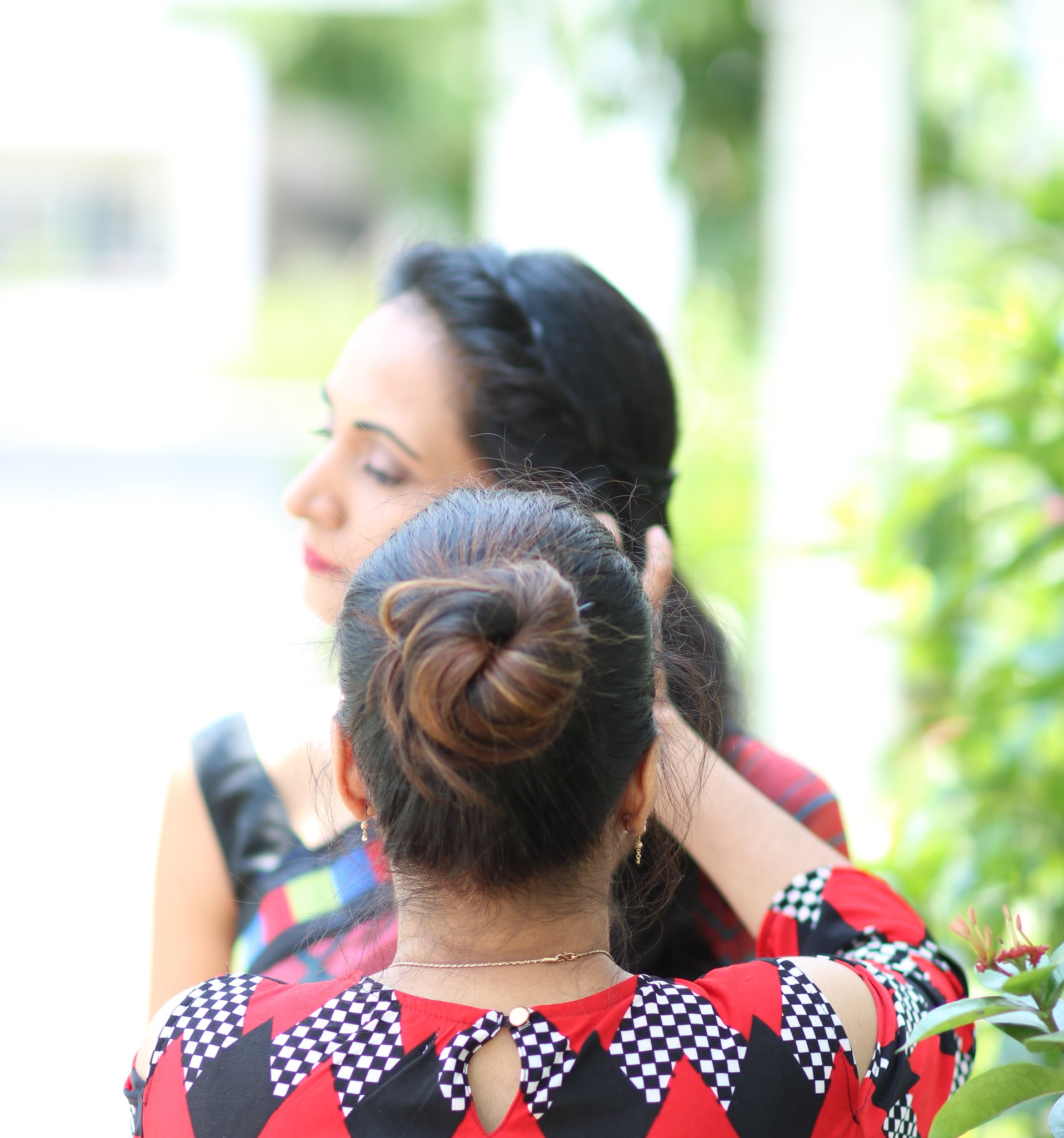












Epitome of Beauty! ❤️ You look like an Indian Cinema star in these photos, Tanya! Beautiful writing, too!
You’re very kind, Shiya. Thank you!
Such an effortlessly cool look ~ perfectly captured! Also, I really love that digitally printed sari!
Thank you, Hema. I’m so glad to hear this!
This is really perfect framing and an absolutely stunning look! You need to get into Hindi Cinema, darling! ❤️
Haha, you’re too kind, Sakshi. Thank you so so much!
Gorgeous styling, Tanya! The way you’ve worn this particular sari is simple but also meaningful. ✨ Loved the still of you gazing into the pool…
Aww ~ thank you so much for reading, and noticing every detail, Barkha.
You look stunning, Tanya ~ and every single shot is amazing! Mesmerising writing not withstanding! ✨
Thanks much, Surendra! So glad to hear this.
Such fineness… a well put together post, and you look beautiful! ❤️ Thank you for the inspiration!
Oh Tia! Thank you so much.
Such artistic allure! ❤️ Who doesn’t love a timeless Indian look, the calibre of which will never fade with time … And, you have nailed that look in these gorgeous pictures!
Delighted Pooja! Thank you so much.
Omg – such a beautiful post ✨ and I really enjoyed these photos. Plus, your writing style is so very interesting, Tanya!
Oh, thank you so much, Gayatri. So sweet of you!
How beautifully pictured… You’re magical, Tanya! ❤️ I’ve been loving all your fashion posts!
I’m happy to hear this, Zahraa. Thank you!
These are million-dollar shots with you looking so graceful and lovely! ✨ And with everything so beautifully put together … I got glimpses of Madhubala and old worldly charm.
Oh ~ you’re so sweet, Kajal. Thank you!
Whoaaaaa… got goosebumps!! Such rawness and beauty… jjitna kahe utna kam hai!! ❤️
I’m humbled, Sachin. Thank you so much!
Wow, your writing is as beautiful as you are! Totally loved the tribute, Tanya!
Thank you very much, Vishal. So kind of you.
Beautiful tribute! ❤️ You are incredibly talented, and it was an absolute delight to read this piece… Keep up the good work!
Thank you so much, Anika. Means a lot!
Your fashion posts are always fantastic! Completely fell in love with your words here, and those stunning visuals are doing complete justice to your beauty!
Many thanks, Payal. You’ve made me so happy!
This is so beautiful! ✨ Just discovered your blog and loving it so far!
So glad to hear this, Shaista. Thank you, and welcome to my blog!
Such an exquisite look that I completely fell in love with! ❤️ Can’t express how beautifully you weave storytelling into your content, and the supporting visuals are always appealing. Keep inspiring!
It’s comments like yours that put a hop in my step and keep me going, Shilpi!